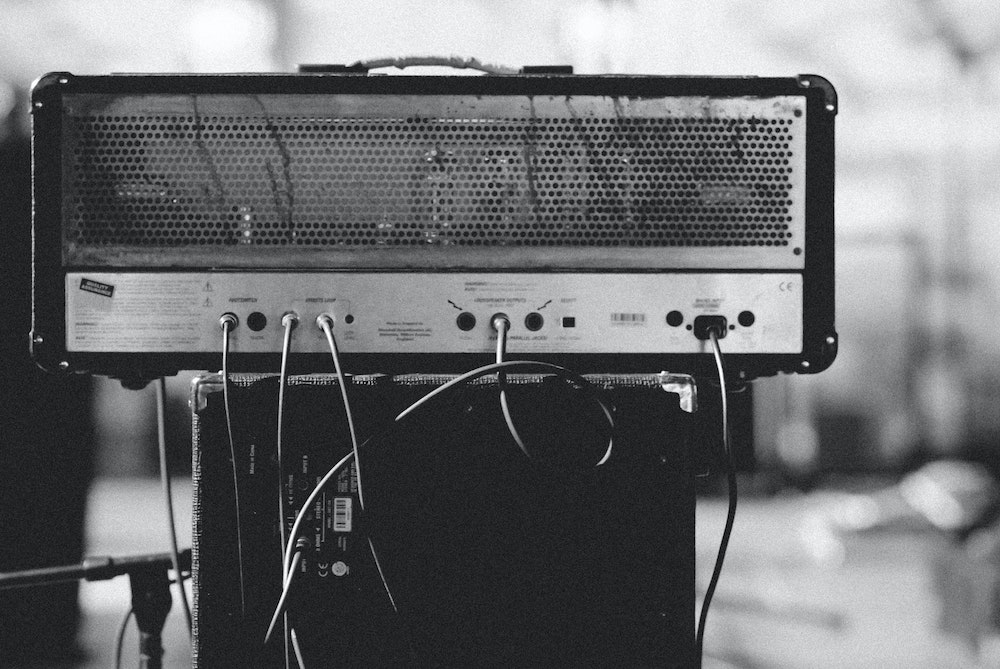
’. Well, to confuse you even more, the answer is quite a lot and not much at all. A paradox if ever there was one. To try and explain more clearly, I’ve put together a list of the main things you need to take into account when choosing between the two.
For anyone who has literally no clue, they both make noise with the same equipment. In this sense they are no different. Get a guitar, an instrument lead, a mains socket and either type of amp and you’re raring to go. In terms of what you need to get playing, there is very little difference between the two.
This is where it gets complicated. Technically, they should sound pretty much the same, but the reality is that most people consider tube amps to sound better. Tube amps are the amps of choice for most gigging musicians. They are the original form of amp and use old-school vacuum tubes to convert the electric-magnetic current sent from the guitar into sound.
Tube amps have a distinctive sound, especially when they are cranked up to what is referred to as the ‘breaking point’ - tube amplifiers create a distinctive sound most when the volume is cranked up. This happens when the tubes are pushed beyond the normal signal levels that they are designed to handle and, thus overdriving the signal sent to the speakers. This creates the classic distorted guitar tone.
Some guitarists would say that they have a warmer, more natural tone that simply cannot be replicated by the computer circuits of solid state amps. In the 1970s, when solid-state amps were first introduced, it is true that they sounded un-natural, missing some of the more nuanced tones of their tube counterparts. However, technology has come a long way in the last 30 years and now I’d say there are a lot of great solid state amps that can replicate the subtleties of their more expensive brothers. The Fender Mustang modeling amp, for example, sounds amazing and gives you a great sonic versatility at a much lower price that a tube amp would.
Here is a great video showing some of the differences between the two. At the end of the day, you have to make your own mind up on this one!
If you’ve not tried out any amps yet, this is probably where you’ve noticed the most difference. Tube amps are usually a lot more expensive and to get a top of the range one, you’re looking at at least £500. Solid state amps are in comparison pretty cheap.
This might not seem to be a big concern if you are just expecting your amp to sit at home. But as soon as you have to carry it down to the local pub for your first gig, you might wish you had though twice on this one.
Tube amps are a lot heavier and less durable on the road: they have a lot of heavy components that involve complicated circuitry and are expensive to replace. If you want to take a tube amp to your mates, just make sure you have access to a car and avoid any open manhole covers, road kill, sleeping policemen…you get the idea. Any crashes with a tube amp and you could end up with a big repair bill.
Solid state amps tend to be a lot lighter: they have less heavy components and because they are digital, not an analogue, they are cheaper and easier to repair.
Amp power is measured in watts. The bigger the wattage, the louder the amp. If you just want to practice in your bedroom, a low watt amp such as 10 or 20 watts will suffice. But if you want to gig, you might want something louder. 50 watts is usually fine for a small club, 100 watts would be more than enough for any guitarist.
Whilst you might be a long way off playing live shows, it is always worth looking ahead - there is no point buying a low power amp to begin with and then having to get a louder one soon after. A bit of foresight will save you time, and probably a bit of money to.
Finally if you do get a tube amp and want the classic valve overdrive at lower volumes, get a lower watt amp because then it will take less signal to saturate the tubes, and will save your ears in the process.
If you’re wanting a cheap amp to play at home and you aren’t interested in recording or gigging, go for the solid state amp. If you’re more bothered about the tonal qualities of you’re amp, save up and get a tube amp. Most people’s priorities can’t be pigeonholed this easily, but if you had to stereotype the two approaches to amp buying, this would be it.
There are also other alternatives.
Hybrid amps combine solid state and tube circuitry, bringing you a better tone at a lower price. Take a look at the Fender Vintage Modified series for an great example of this fusion.
Written by Adam Sumnall
Student at the University of Exeter and resident Smiths enthusiast.
